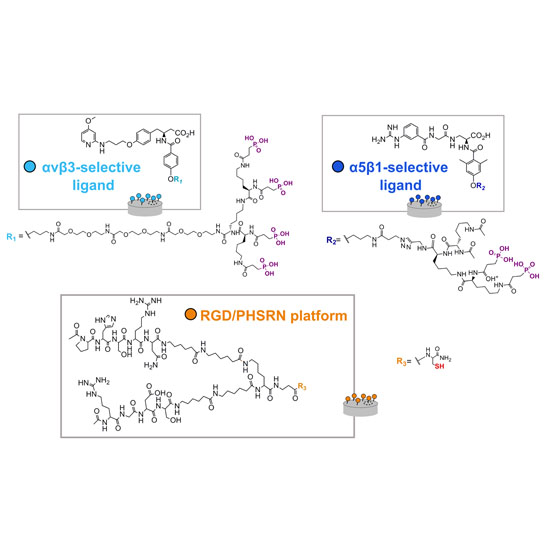Towards the cell-instructive bactericidal substrate: exploring the combination of nanotopographical features and integrin selective synthetic ligands
27-Nov-2017
Scientific Reports, volume 7, Article number: 16363 (2017), https://doi.org/10.1038/s41598-017-16385-3
Scientific Reports, online article
Engineering the interface between biomaterials and tissues is important to increase implant lifetime and avoid failures and revision surgeries. Permanent devices should enhance attachment and differentiation of stem cells, responsible for injured tissue repair, and simultaneously discourage bacterial colonization; this represents a major challenge. To take first steps towards such a multifunctional surface we propose merging topographical and biochemical cues on the surface of a clinically relevant material such as titanium. In detail, our strategy combines antibacterial nanotopographical features with integrin selective synthetic ligands that can rescue the adhesive capacity of the surfaces and instruct mesenchymal stem cell (MSC) response. To this end, a smooth substrate and two different high aspect ratio topographies have been produced and coated either with an αvβ3-selective peptidomimetic, an α5β1-selective peptidomimetic, or an RGD/PHSRN peptidic molecule. Results showed that antibacterial effects of the substrates could be maintained when tested on pathogenic Pseudomonas aeruginosa. Further, functionalization increased MSC adhesion to the surfaces and the αvβ3-selective peptidomimetic-coated nanotopographies promoted osteogenesis. Such a dual physicochemical approach to achieve multifunctional surfaces represents a first step in the design of novel cell-instructive biomaterial surfaces.











